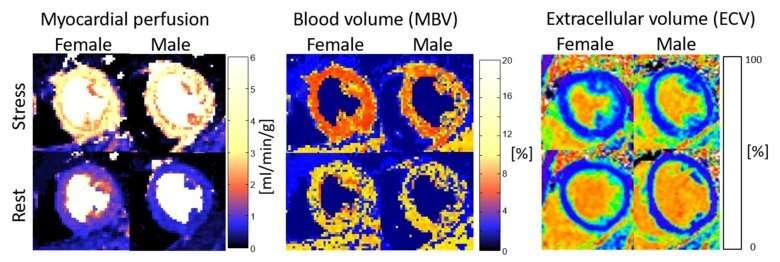Jannike Nickander and Martin Ugander. Credit: Karolinska Institutet
Thanks to new technology, researchers at the Clinical Physiology group, Department of Molecular Medicine and Surgery, Karolinska Institutet, have demonstrated that females have higher myocardial perfusion, blood volume and extracellular volume in the heart compared to males. These findings were recently published in the journal Scientific Reports.
A newly developed technique allows for quantitative perfusion imaging of the heart using magnetic resonance.
"Healthy volunteers underwent perfusion imaging during pharmacological stress in order to investigate the heart's perfusion," says Jannike Nickander, from the group Clinical Physiology.
The study shows that women have higher perfusion, blood volume and extracellular volume compared to men during pharmacological stress, and that sex is an independent contributor to both extracellular volume and perfusion beyond other measurements such as blood composition or the size of the heart.
Sex differences in the physiology of the heart
The study provides mechanistic insights into sex differences in the physiology of the heart, and the differences may in part explain the differences in mortality in heart diseases between men and women. The fact that women have higher extracellular volume (the distance between the heart cells) may be a reason for the need for higher perfusion, but the higher perfusion and extracellular volume may also be due to a higher number of capillaries (the smallest blood vessels that provide the heart with oxygen). This theory is now being investigated in a big collection of healthy tissue from hearts in different age groups among both men and women.
More information: Jannike Nickander et al. Females have higher myocardial perfusion, blood volume and extracellular volume compared to males – an adenosine stress cardiovascular magnetic resonance study, Scientific Reports (2020). DOI: 10.1038/s41598-020-67196-y
Journal information: Scientific Reports
Provided by Karolinska Institutet
























